“Why do they DO that?”
Exploring the Mysteries of Commercial Beekeeping
By Stacy McKenna

Who’s seen “Bee Movie”? The beekeepers there were presented kind of like the government types from ET – nefarious, faceless, threatening, white-suited people doing unknown things with unfamiliar beings in ways that made everyone else wonder “what is going on?” In fact, after “Bee Movie” came out (oh, don’t start me on the biological and entomological errors!) I read an editorial about how the beekeeping community had shot itself in the foot by not being more available to consult and make their actions more logical and explicable to Hollywood, the media at large, and the public in general.
And it is a problem. One of the biggest complaints we officers hear about our group is “Why do you spend so much time talking about commercial beekeeping?! We don’t care – they’re the ones killing our bees in the first place!” There’s a lot of anger, and disdain. We see this attitude reflected in news articles about those horrible commercial beekeepers who stress their bees out trucking them thousands of miles, stealing all their honey, feeding them corn syrup and soy flour, pumping their hives full of antibiotics and miticides and other “chemicals”.
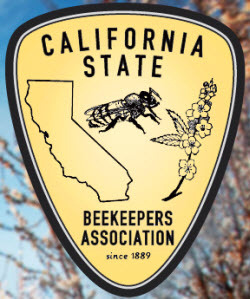
When I attended my first CSBA convention back in 2009, Keith Roberts was also attending his first beekeeping convention, and we had a lot of the same questions. He’d been working under Walt McBride’s mentorship for about a year, and I’d been reading about bees for that long, as well as volunteering at the LA County Fair which taught me a bunch more, but I’d never kept bees myself. We went with fairly open minds and wanted to understand what beekeeping was like for these “big guys”. At the time there were no breakout sessions for the hobbyists – everything was geared for commercial guys. We sat through sessions about almond prices (and learned the difference between Amond and ALmond), CA Air Resources Board presentations about impending diesel smog requirements, almond board reports, pollination price estimates, insurance options and employee regulations… It was baffling how little we were hearing about bees!! What kept being reiterated was how expensive it was to maintain bees for almonds (about $160-$200/hive/year) compared to the revenue of almonds (about $150-$175), how stressful this trucking/pesticide exposure/day care environment was to the bees and how much it increased incidents of disease and parasite infestation, bees lost to heat at border stops, etc. Now, we did also hear some amazing scientific reports on the effects of pesticides, food supplement comparisons, CCD research, all sorts of things.
But after three days of this deluge, we still couldn’t figure out why (a) beekeepers didn’t just stay home and live off honey sales, or (b) why farmers didn’t just keep their own bees. At the final banquet, we wound up sitting with an elderly couple who’d been raising bees for 50 years. They were from Iowa or Idaho, I forget which, and were absolutely delightful. So, we asked them – why didn’t they just leave their bees at home and get off the out-of-season-feeding, medicating, transporting treadmill? The wife looked at us very kindly but with some amusement and explained “Because they’d starve. If we didn’t follow the crops, there would be no bees. They don’t even have dandelions to forage from anymore.”
Let me repeat this, because it’s important:
Commercial migratory beekeepers move their bees from crop to crop because
otherwise the bees would starve.
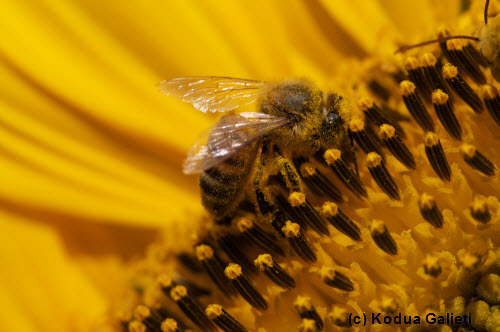
And this is where the whole crazy-looking scenario started to make sense to me. Our current monocropping agricultural system is SO EFFICIENT that nothing is left behind to bloom in off-cycles. Cropland is laid bare except for the crop to be harvested, and in some areas, you can drive miles before seeing the crop shift from one plant to another.
This is why programs like Bee Friendly Farming exist – to help get wildflowers back into hedgerows, ditches, fallow fields – so the local bees (and even visiting pollination contract bees) have more than one crop to forage from. One of the presentations we’d seen earlier in the week by Neal Williams of UCDavis had been a map survey of the northern valley region. He threw up a map of the county he was looking at, broken down into 3m2 blocks via satellite view. He gave a brief description – agricultural lands in the valley, foothills/mountains, coastal regions largely residential or boutique farming. Obviously, the coastal region was fairly lush thanks to the humidity provided by the marine layer, but the money is from the commercial agriculture in the valley. Then he threw up his first analysis – available forage. The entire agricultural valley was red. Aside from the brief blooming periods of commercial crops, there was nothing for bees to eat. Any bee trying to survive in that valley would starve due to lack of forage 11 months out of the year. The coastal regions of coarse were a soothing blue – residential areas and natural vegetation have a mix of plant life that blooms in continuous waves and cycles, offering forage year round. Then he tossed up another map – this one showing potential hive locations. Again, the valley turned up red, and the coast/hills were blue. Even if bees could find food in the valley, they’d have nowhere to put it. The ultimate irony – our most fertile and productive agricultural lands were totally uninhabitable by bees.
So, that explains the first problem – beekeepers living in agricultural regions no longer had adequate forage for their bees and thus had to chase pollination seasons to keep them fed.
Commercial migratory beekeepers move their bees from crop to crop
because otherwise the bees would starve.

So, why not move to somewhere like the coastal regions that had plenty of forage? Now we run into that real estate adage of “location, location, location”. Any experienced beekeeper will tell you, the toughest part is finding apiary space. As it turns out, places densely populated with people (and their tasty, well-irrigated floral landscaping) are frequently not zoned to allow bees because of those unfortunate stingers and the issue of public health/safety. So, we’ve marginalized our commercial beekeepers to… agricultural zones. Here in the City of Los Angeles, the 7 zones where bees are permitted are all either agricultural or commercial (and how many floral acres do you think there are in commercial areas?) So, we’ve outlawed bees where the flowers are. There are some other options – federal and state forests and parks, but you still run into public use issues and permitting those can be very rough. And they’re usually not particularly convenient for the beekeeper! Having enough apiary spaces to keep bees with adequate forage is tricky because the farmers only want you 1-2 months out of the year, and no one wants you the rest of the time…
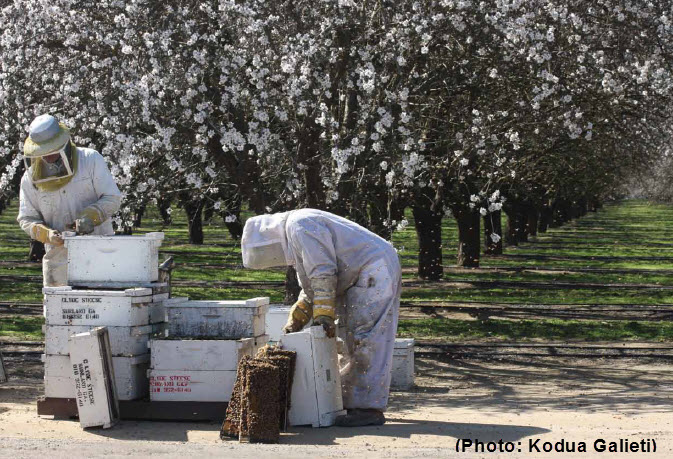
So why don’t farmers keep their own bees and move them from place to place? Well, some do, but it’s usually those small boutique farmers near the coast who are already doing varied crops using organic methods on small acreage who can leave their hive in one spot and just soak up the advantage of the increased pollination. Larger farming operations often find it more economical to hire out than pay their own staff to do it. So why do they bother hiring out at all? First, they get better crop yields. But perhaps even more importantly (for those farmers who don’t really get the math of investment and return), pollinators are required by the farmer’s insurance companies. Farming is a risky business – you’re at the mercy of weather, legislation, market interest, locust reproductive cycles, you name it. Any smart farmer has crop insurance. Running a farm without insurance is practically suicide, and the risk of going bankrupt within five years is extremely high. Any smart insurance company requires a specific number of hives per acre, depending on the crop. And smart insurers AND farmers will require those hives be of a certain strength in February – way before bees would normally be at full strength. Now, there are good and shady operators on both side of the line – there are beekeepers who send out any hive boxes they’ve got in the yard, bees or not, and expect to get paid (albeit somewhat less) and there are farmers willing to pay for that just to fulfill their insurance obligations on paper and save on pollination fees. But the responsible farmers want full boxes, and the reputablebeekeepers want to give that to them. How? We force it. Like bodybuilders altering their diet before a competition to get the body fat way down and their figures “cut” for competition, beekeepers alter the hive diet to prep their girls for the big inspection at almond time. Just like body builders we pump up the amount of protein (pollen) in the hive because more pollen means more brood which means more bees which means bigger pollination contract checks and more future pollination contracts. Unlike body builders, we also pump up the carbohydrates so the bees have enough calories to feed those new brood and build more comb for the honey they’ll hopefully be harvesting in almonds, oranges, avocadoes, cherries, strawberries, blueberries, etc.

Obviously, the best carbs and protein for bees are what they’ve saved themselves, but those are also valuable resources for the beekeeper. When honey is getting $10/lb retail and sugar costs $0.50 pound at Costco, it’s unsurprising why the majority of honey is harvested and replaced with syrup at the right time of year. Less obvious is that sudden availability of sugar in the form of nectar or syrup will stimulate the bees to act like spring has started, even if it’s technically out of season. So, by adding syrup of the right consistency at the right time of year, beekeepers can help trick the bees into behaviors they would otherwise put off for a few weeks or even months, and they start raising brood and building comb in the cold of late winter.
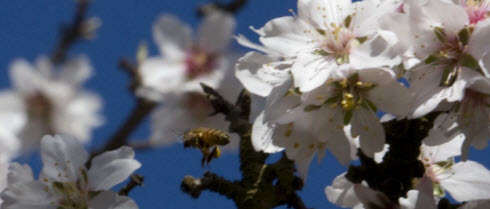
But why all the talk about almonds? What’s the big deal about almonds? CA has the world’s largest almond crop. We ship all over the globe from right here in CA. It commands a HUGE amount of revenue, which means political as well as economic clout. It’s the best paying crop of the year, in no small part because it’s also the first crop of the year. Almond growers know (because we’ve educated them) that getting our bees in the shape they want them is TOUGH. But those almond crops bring in a lot of money, and those almond growers know that if they want those almonds to keep growing, and that money to keep flowing, they need to make it worth our time and stress to make it happen. Almond pollination prices have been climbing for the past decade, and in some cases are closer to $200/hive than $100/hive. For a beekeeper who’s calculated hive operating expenses for the year to be $175-$225/hive, that’s a big deal. Now, the hobbyist may boggle at that – but commercial guys have trucks, forklifts, fuel, employees (and their insurance coverage), permits & licenses, BOE taxes, facility expenses, equipment expenses, replacement woodenware or extraction equipment upkeep, personal protective gear (yes, it DOES wear out), any miticides or antibiotics, and THEN bee syrup and pollen patties. My back yard operation is a breeze in comparison – this year I bought only a 50lb bag of sugar and a bucket of MAQS that’ll last me several seasons (though I should alternate multiple treatments). So, when you can get 75% or more of your baseline expenses back in one crop, and then have additional crops/honey harvesting for profits, you do it. Because you can’t get the pollination contracts if your bees aren’t fed, and you can’t feed unless you get your baseline expenses covered…
Now, one of the biggest objections I hear about commercial beekeepers: Why do they put so many poisons in their hives? Why do they expose them to so many pesticides in those fields? Well, we’ve already covered the reason they go to the field:
Commercial migratory beekeepers move their bees from crop to crop
because otherwise the bees would starve.
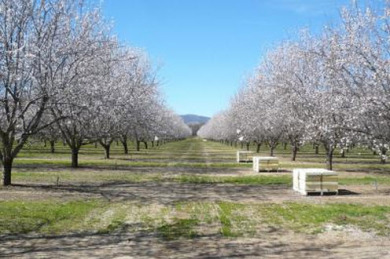
The farmers are spraying to guarantee bloom during spring, prevent bloom rot, prevent failure to set, etc. Sometimes these things are required by insurance. Many times these measures are more strongly required than in smaller operations BECAUSE of the monocropping. Do beekeepers like it? No. But they really don’t have much choice about what the farmers spray. At best, they can work with their farmers to work out schedules that involve spraying while the bees are inside (after dark or before they arrive/after they leave in rare cases). I know Bill Lewis and Clyde Steese have hopped on their cell phones to research MSDS documentation and keep workers from spraying when they catch something on site that would adversely affect their bees, and negotiate more bee-friendly alternatives right then and there.
But the medication of bees… it’s a delicate balance for beekeepers at all times. Almond season is like stuffing a bunch of businessmen into an international plane flight that lasts sometimes several days with inadequate air conditioning and only an occasional hose for drink service, then keeping them in a closed hotel roomed next to other businessmen from all over the country (previously the globe – Australian bee imports were banned in 2011) with only oatmeal and milkshakes as food for a month, and then sending them home via the same under-air-conditioned plane (only during warmer weather!) on the return. The whole scenario is often compared to the day care/school problem of kids sharing germs because they’re in close proximity for extended periods of time sharing lice, colds, flus, chicken pox, strep throat, athlete’s foot… Well, bees spread viruses like deformed wing or acute paralysis virus, fungal infections like Nosema, bacterial infections like foulbrood, and parasites like varroa mite or small hive beetle. Do we send our families to school or international business trips without vaccinations, or make them suffer without treatment when they do contract lice or strep throat or malaria? We prevent what we can, and we treat what we can. The hard part is that, especially with parasites, we’re trying to kill a small animal while not killing a slightly less small animal. The distance between ineffective-but-breeding-resistance-in-the-parasite and effective-kill-but-harms-the-bees is slim. The other problem we’re having is that so few treatments are available at any one time. Yes, beekeepers treating with the same mechanism all the time breeds resistance, and when they’re all using the same thing it breeds resistance even faster, but how many miticides do we have access to right now? A quick look at Mann Lake reveals: Formic acid. Amitraz. Fluvalinate. Thymol. Hop Guard. Some treatments our mites are already or mostly resistant to. Hop Guard doesn’t affect brood, and is contact only. Several can’t be used during honey flow. Our options are few, and there’s little market to drive research into additional options, and approval is (for many reasons: some good and some bad) slow.

Now, on to another topic that I get questions about all the time – swarms. I get emails and phone calls almost every week from people saying “I have bees in my fence/wall/ attic/eaves/tree/whatever – I don’t want them killed. If someone will come collect them, they can have them for free!” and often these people are frustrated and angry that this offer hasn’t been snatched up when they’ve approached people about it. The sentiment that is often expressed is “But the bees are dying! You’re beekeepers, why don’t you CARE?!” Well, this is a very localized phenomenon and the blunt, brief answer is “Because the bees in your yard are worthless to commercial beekeepers.” If we were in San Francisco, or Seattle, people might get a different response, because those areas do not have Africanized bees. But not much different. The Southern California feral populations are Africanized pervasively enough that most commercial beekeepers have little or no use for the colonies once they’ve been collected, and even if they ARE willing to work with feral hives, the time and expense involved in collecting them rather than buying new packages or tending already housed hives is prohibitive. These are professional people with years of experience and significant amounts of equipment doing a skilled (often bonded/insured) service, just like any plumber, electrician, or other skilled laborer you might hire. Packages in the spring cost only $65/ea. Unless you have a low-hanging swarm a block away from a beekeeper who can simply tap it into a box, your removal is NOT going to cost them less than $65 to acquire, and there is a significant chance that one of the following will happen:
The colony will be become more aggressive/defensive as it ages, and be unsuitable for working/pollination contracts
The colony will abscond within the first week and the beekeeper is left with no bees
The colony will succumb to disease/exposure to pesticides that made it flee from its previous home in the first place.
None of these situations are particularly likely with commercially acquired colonies, so the beekeepers run a much lower risk of failure with purchased colonies than with removals. The national media is reporting on the loss of commercial bees, and the local media is not taking the time to add the filter of Africanized influence to the story and how that affects the value of local feral colonies, or how we manage them. Local vector control districts stopped testing local bees when they started getting 80% positive results for Africanization – it’s not worth their time, and is why they routinely advise extermination rather than capture. This is also why beekeepers are often hesitant about beekeeping legalization – because our first concern is public safety and the long term viability of our craft locally rather than an interest in everyone adopting a local swarm that isn’t actually going to help solve the problem of our commercial bee losses.

Stacy McKenna is the former secretary of the Los Angeles County Beekeepers Association. This article originally appeared in the American Bee Journal.
Video: An Almond Story / California Almonds
American Beekeeping Federation
California State Beekeepers Association
Articles:
Commercial Bees, The Unsung Heroes of the Nut Business!
(Article about Bill’s Bees by Tracey Samuelson featured for Marketplace)
An Almond Odyssey: First Steps
(Bee Culture Magazine, Article by Kim Flottum)
Busy Bees Golden State’s $5.6 billion almond crop requires world’s largest bee mobilization
(Manteca Ripon Bulletin)







